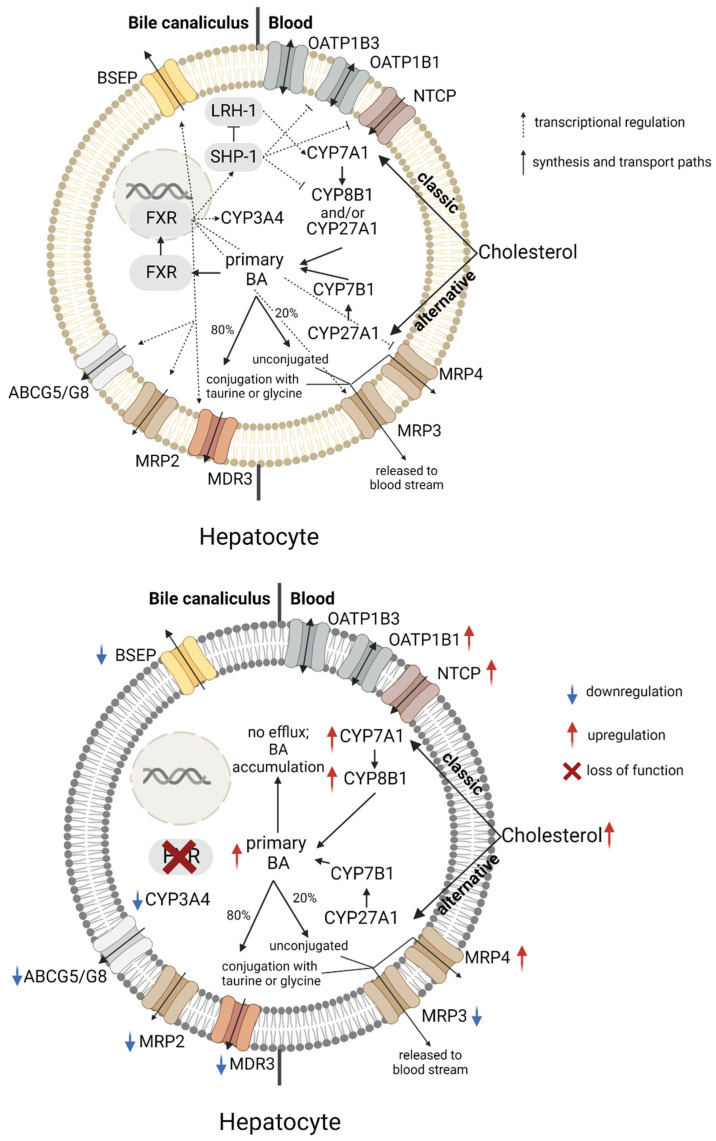Figure 1.
Schematic representation of the regulatory role of FXR in bile acid homeostasis. Top panel: Under physiological conditions, hepatocytes convert cholesterol to bile acids following the classic or alternative pathway. Bile acids can bind to and activate FXR, which translocates to the nucleus, where it induces the transcription of genes encoding proteins involved in BA synthesis, transport and degradation, in order to maintain sub-toxic BA intracellular levels. Bottom panel: Reduced expression and/or function of FXR leads to an increased BA synthesis, and reduced BA efflux and degradation. ABCG = ATP-binding cassette subfamily G, BA = Bile acid, BSEP = Bile salt export pump, CYP = Cytochrome P450, FXR = Farnesoid X receptor, LRH-1 = Liver receptor homolog 1, MDR = Multidrug resistance protein, MRP = Multidrug resistance associated protein, NTCP = Sodium-taurocholate cotransporting polypeptide, OATP = Organic anion transporter protein, SHP-1 = Small heterodimer protein-1; Figure has been created with BioRender.com.

